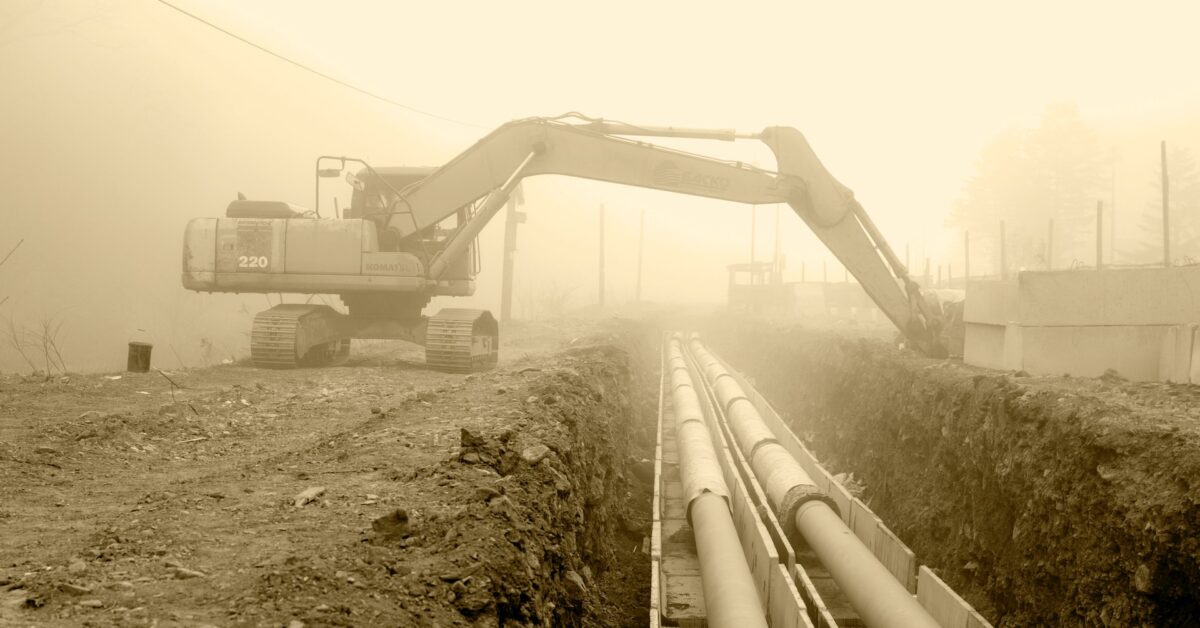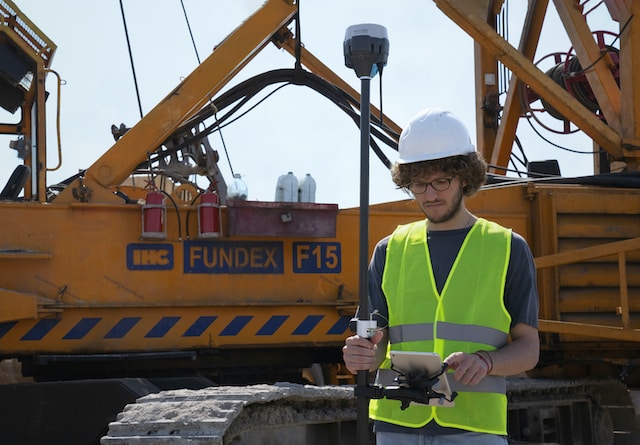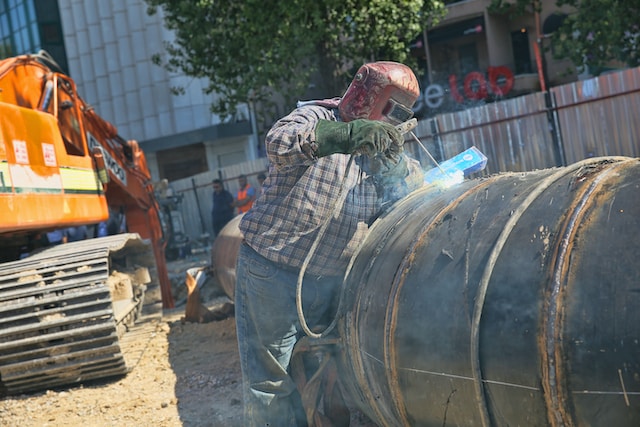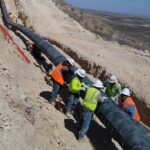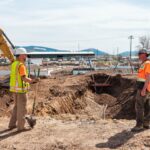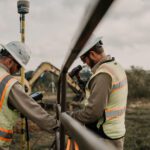When building a pipeline, many companies have environmental sustainability as their primary goal. Designating only low-risk, environmentally stable locations for construction guarantees longevity for your pipeline as well as for the surrounding ecosystem. And of course, the lifespan of your pipeline impacts your bottom line.
Picking the right pipeline route takes not only knowledge and expertise but also a plethora of well-conducted research on the land where the pipeline will be running.
The only way to make a well-informed decision about your pipeline route is by utilizing land surveys, which compile topographical and environmental data to create a comprehensive report on possible sites.
There are many different types of land surveys, and they serve many different purposes. Baseline surveys are just one common type of land survey. These surveys are performed before any construction begins on a pipeline to gain a better understanding of environmental factors and identify any possible future issues.
Conducting a baseline survey is a nuanced process. This article will walk you through the intricacies of baseline surveys as well as why they are necessary for every pipeline project. We will discuss what goes into baseline surveying as well as who is involved in conducting them and what you can expect at every step of the way.
What is a Baseline Survey for Pipeline?
A baseline survey systematically evaluates possible construction sites for pipelines, taking into account both man-made and environmental features. It combines a litany of surveying techniques to collect vast amounts of information on possible building plots.
The collected data creates a baseline for the area, making it easy to identify if something is amiss during or after construction. Baseline surveys provide information for both current and future analysis of pipeline performance and environmental impact.
Environmental Data in Pipeline Baseline Surveys
The environmental data collected in a baseline survey may include anything from native plant community composition to soil stabilization information. Soil is a key variable to consider in pipeline construction. Compacted soil can slow the construction of a pipeline dramatically.
The composition of the soil is extremely important as well, as certain soils are prone to corroding pipelines, which can cause dangerous consequences.
A baseline survey is also able to collect topographical information, and it can predict whether or not an area may be sensitive to droughts or other environmental disasters such as earthquakes. These may be damaging to pipelines and can cause issues such as ruptures.
Further, baseline surveys are able to predict the possible long-term effects of pipeline construction by analyzing possible forms of erosion. Pipelines built in certain areas may suffer from higher levels of erosion, which can damage operations.
Basically, baseline surveying allows pipeline companies to get a glimpse of the future when it comes to their pipeline’s longevity and performance.
By exploring the environmental factors and conditions along the pipeline’s planned route, baseline surveys provide crucial information that can inform routing decisions as well as other considerations such as pipeline material, thickness, and more.
When they conduct baseline surveys, pipeline companies are making sure that their pipeline operates efficiently for decades or even centuries into the future.
Non-Environmental Data in Pipeline Baseline Surveys
Baseline surveys also extend to non-environmental features. They can include demographic data, such as the size and area of nearby population centers, which helps civil engineering teams and pipeline planners mitigate the potential for human risk in the worst-case scenario: major pipeline failure.
Frequent transportation and agricultural activity can be potential threats to pipelines. The heavy machinery used in agriculture can be damaging to a pipeline’s integrity and can also disturb the soil.
Construction should also be avoided in these areas. Baseline surveys are able to compile a comprehensive report on these activities and their frequencies.
Sometimes, a baseline survey will refer to a survey conducted after construction is complete. In these surveys, companies use devices called PIGs (pipeline inspection gauges) to check for internal corrosion and possible weak points.
These devices can travel inside the pipeline while it is still in operation and are able to establish a baseline – or an ideal condition for the pipeline at which it must be maintained. In the world of oil and gas, baseline surveys can refer to both pre-construction surveys and post-construction PIG surveys.
What is Involved in a Baseline Survey?
Collecting so much data on an often-large plot of land can be extremely time-consuming. Luckily, most companies involved in baseline surveys have a streamlined process to ensure both efficient and reliable surveys.
A baseline survey requires a team of trained professionals who may take samples of soil and identify the topographic layout. If the area is especially large, the surveying team will often divide it into lots to make the work more manageable.
Specialized tools such as GPS receivers and electronic distance measurement systems may be used in this process. These tools require skilled surveyors to guarantee precision and accuracy – which is essential for this type of work.
After the initial fieldwork, the team assembles the data in a report. It is at this point that they pinpoint possible threats to construction as well as possible solutions. At this stage, the team may confirm the project complies with government policies at both federal and state levels.
The team will compile a report that will be presented to the client, who can then use it to make the best decisions for his or her pipeline project. They may use the information gathered in this survey in their construction plan as well as when implementing ways to maintain the integrity of the line over time.
What is the Purpose of a Baseline Survey?
A baseline survey is an asset before, during, and after pipeline construction. The data collected in these surveys is critical in determining the ideal route for any pipeline, possible features of the land that may be important in construction, and the most important things to look out for to ensure the safe operation of a pipeline.
It is for these reasons that governments around the world require environmental baseline surveys before construction. By outlining potential problems before they occur, companies are able to be preemptive in their planning processes, preventing issues down the road.
Using baseline surveys makes pipeline construction safer for both human populations and the environments surrounding a pipeline site. These surveys help companies protect themselves against economic losses as well by minimizing the risks of leaks and ruptures.
Who is Involved in Conducting a Baseline Survey?
Baseline surveys are undertaken by experienced surveyors. They can be very complex and require a lot of attention to detail. Surveyors conducting baseline surveys should be thorough both in their fieldwork and when compiling data to prevent any accidents.
Often, these surveys are conducted in a team – the size of which depends on the size of the project. These teams are usually multidisciplinary, with members concentrating on certain areas.
By curating a team with a wide range of abilities, surveying companies are able to allow each member to specialize and become an expert in a specific piece of the process.
These multidisciplinary teams may be composed of surveyors, geotechnical engineers, ecologists, and others. Surveyors are typically responsible for measuring the property boundaries and topographical features.
Geotechnical engineers may be more experienced in monitoring the stability of the land. They will likely be the professionals taking soil samples, checking for environmental stability, and identifying potential geological hazards.
Ecologists are able to focus on the risks pipelines may pose to the local environment. They may discern certain sensitive areas that should not be built in or spots that could lead to pipeline problems in the future.
Throughout the process, both the surveying company and the client must facilitate a collaborative relationship in order to garner the best results. Communication is key when it comes to successfully constructing a pipeline.
FAQs
What types of pipelines require a baseline survey?
All pipelines can benefit from the use of baseline surveys. From gathering to distribution pipelines, the use of baseline surveys can prevent risky pipeline construction.
The most extensive baseline surveys are often conducted for transmission and distribution pipelines. Transmission pipelines carry oil and gas long distances. These pipelines are often higher in pressure and larger in diameter. The high pressure can make these pipelines more susceptible to bursting, so governments require pre-construction surveys to ensure safety.
Distribution pipelines deliver materials directly to homes, businesses, and facilities. While these pipelines are lower pressure and less likely to fail, the consequences of failure can be more destructive. Baseline surveys can help properly plan the construction of these lines.
How long does a baseline survey take?
A baseline survey can take anywhere from 12 to 18 months. Like any other survey, the length of the process is dependent on the size of the area that must be surveyed, the potential data that must be collected, and the size of the team.
Hiring an experienced environmental surveying company for this task can be a great way to save time. By streamlining their processes, these companies are able to produce results quicker – without skimping on quality.
How much does a baseline survey cost?
Most environmental baseline surveys cost an average of $500,000 dollars and up. While this can seem expensive, it is in fact a necessary investment for your pipeline project.
These costs, which ensure the safety of the surrounding area, are null compared to the costs of a potential pipeline leak. These leaks can destroy landscapes for generations and cost millions in habitat restoration. Lawsuits levied against companies with faulty pipelines can incur millions in damages.
Oil pipeline ruptures cut off an important source of fuel. Every time a pipeline is forced to halt operations, the company behind it loses out on major potential revenue.
Rather than allow for expensive risks, pipeline companies can be proactive, identifying and safeguarding against these risks before they occur by conducting baseline surveys.
Final Thoughts
Baseline surveys are a critical step of the pipeline construction process. They help companies make environmentally conscious, well-informed decisions. Additionally, they safeguard the integrity of pipelines and prove to be an economical option in terms of mitigating risk.
While baseline surveys typically occur before construction, pipelines often undergo many different surveys and inspections in their lifetime. New technologies allow these pipelines to become safer by the year. The increased use of automation has been able to improve efficiency as well as reduce the risk of human accidents.
The world continues to depend on the oil and gas industry. Constant innovation promises to make the industry more environmentally friendly in our rapidly changing world. Many companies in the industry have made a move to cleaner, more renewable energy.
At Fenstermaker, we are committed to environmental safeguarding within the oil and gas industry, and we use our engineering prowess to seek creative solutions in pipeline surveys and beyond.
